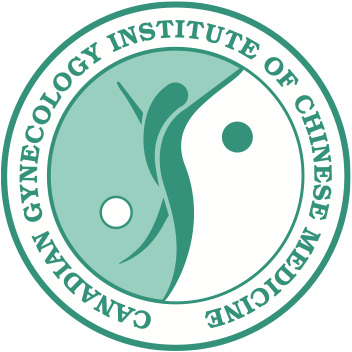Fibroids
Uterine fibroids are non-cancerous masses in or around the uterus. This has become a very common gynecology problem, 1 in 5 women suffer from uterine fibroids during their childbearing years and almost half of all women over 50 have fibroids.
The masses generally arise from an overgrowth of smooth muscle and connective tissue in the uterus.
They are known under many names: uterine myoma, leioma, fibroma, fibromyoma, or as hysteromyoma.
Common symptoms:
- Bleeding between periods
- Heavy bleeding during your period, sometimes with blood clots
- Periods that may last longer than normal
- Needing to urinate more often
- Pelvic cramping or pain with periods
- Feeling fullness or pressure in your lower belly
- Pressure on adjacent organs such as the bladder causing urinary frequency and incontinence or the colon causing constipation
- Pain during intercourse
- Infertility
It is also common for women to have no symptoms at all.
Diagnosis:
- Ultrasound
- MRI
- Saline infusion sonogram (hysterosonography): Saline is injected into the uterus to make it easier to see the uterus using ultrasound
- Hysteroscopy uses a long, thin tube inserted into through the vagina and into the uterus to examine the inside of the uterus
Common Western Treatment for fibroids:
- Birth control pills to help control heavy periods
- Intrauterine devices (IUDs) that release hormones to help reduce heavy bleeding and pain
- Iron supplements to prevent or treat anemia due to heavy periods
- Pain relievers such as ibuprofen or naproxen for cramps or pain
- Hormone therapy shots to help shrink fibroids (done only for a short time)
- Watch and wait: You may have pelvic exams or ultrasounds every once in a while to check the fibroid’s growth
Surgery and procedures used to treat fibroids include:
- Uterine artery embolization: This procedure stops the blood supply to the fibroid, causing it to shrink and die.
- Hysteroscopic myomectomy: Removal of fibroids inside the uterus through hysteroscopy.
- Myomectomy: Surgical removal of fibroids from the uterus.
- Hysterectomy: Removal of the uterus.
- Myolysis: laparoscopic procedure, an electric current or laser destroys the fibroids and shrinks the blood vessels that feed them.
- Endometrial ablation and resection of submucosal fibroids
How Chinese Medicine Can Help with Fibroids
Before we outline how Chinese medicine can help as a natural treatment for fibroids, it is important to take note that unrealistic expectations of natural treatments need to be adjusted. People often expect short term use with natural herbs or other treatments will make large fibroids disappear quickly. Chronic conditions that took a long time to develop and may also incorporate various nutritional deficiencies will take time to heal.
Shrinkage of grapefruit sized fibroids is not expected, but treatment with Chinese medicine can help to prepare the body for surgery and reduce complications.
Chinese medicine has been developing treatments for fibroids since 100 BCE, literature was found in the Ling Shu which called it a stoney tumor. Over the hundreds of years, treatment has been developed using herbs and acupuncture.
Causes of Fibroids
Fibroids are becoming more and more common in woman at an alarming rate. A good question is why, but the cause is unknown. There have been several studies that suggest that each fibroid begins from a single neoplastic cell within the smooth muscle of the myometrium. Neoplastic just means relating to a tumor or tumor formation, it does not mean cancerous. There is also some evidence that there is a genetic predisposition. Evidence that they have hormone dependencies are that they have both estrogen and progestin receptors. Elevated estrogen in a women may cause fibroid enlargement. Fibroids generally shrink after menopause, but can regrow with hormone replacement therapy.
Classification
According to Location:
- Submucosal: Projecting into the endometrial canal, these are the least common making up about 5% of fibroid cases but they are the most symptomatic. They are often associated with dysmenorrhea (painful period), menorrhagia (heavy period) and infertility.
- Intramural: Located within the myometrium are the most common and are mostly asymptomatic but can occasionally be associated with menorrhagia (heavy period) and infertility.
- Subserosal: Located beneath the serosa.
Causes According to Chinese Medicine
Abdominal masses are always related to either Qi stagnation or Blood stasis and there may also be Phlegm involved. There is always an underlying Qi (energy) deficiency involved.
Emotions: Emotional strain is the most common cause for the formation of abdominal masses. Common emotions which are related to the formation of abdominal masses are anger-especially when repressed, frustration, resentment and hatred. When in these emotional states for too long, it causes Liver Qi stagnation and later turns into Liver Blood stasis.
Diet: Irregular eating, such as the overconsumption of cold and raw foods may lead to external cold invading the lower abdomen. Cold contracts and interferes with the normal circulation of Qi and Blood, leading to Blood stasis. Consumption of greasy foods damages the Spleen which is the main digestive organ and allows dampness and phlegm to accumulate which can settle into the lower abdomen causing masses. Phlegm and Blood stasis have a close interaction and can mutually aggravate each other.
External Pathogens: External cold can invade the lower abdomen and disrupt the circulation of the Qi and Blood leading to Blood stasis. External dampness can invade the channels of the legs and rise to settle in the lower abdomen where it will transform into Phlegm and turn into abdominal masses.
